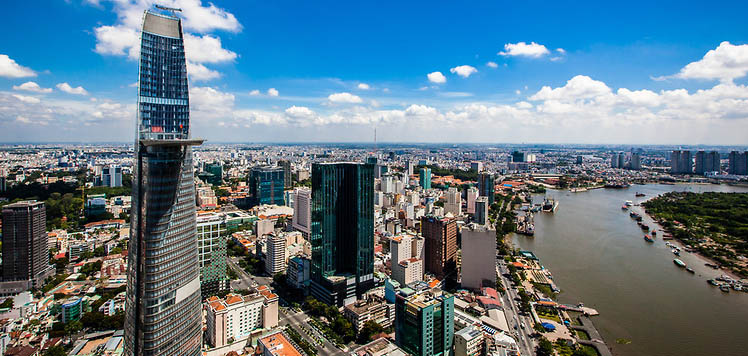[ad_1]

The 6.7% growth rate is within reach
Thien said of four growth engines of Vietnam (state-owned, private sector, foreign-invested sector and agriculture), only FIEs have been thriving as they can take full advantage of Vietnam economy and their wings are not clipped by policies.
Thien’s comment is similar to the conclusion made in 2013 by a group of Fulbright scholars.
FIEs’ contribution to Vietnam’s exports has been increasing rapidly from 57 percent in 2005 to 72 percent this year. However, their contribution of added value to GDP is modest, 15.2 percent in 2005 and 18.7 percent in 2016.
“Their exports have increased, but they have also pushed up imports and been the major factor behind the prolonged trade deficit,” Thien said.
|
FIEs’ contribution to Vietnam’s exports has been increasing rapidly from 57 percent in 2005 to 72 percent this year. However, their contribution of added value to GDP is modest, 15.2 percent in 2005 and 18.7 percent in 2016. |
Vu Thanh Tu Anh from Fulbright University and his co-workers conducted research on Intel and Samsung and found ‘discouraging results’.
Anh said at a recent workshop in Hanoi that Intel has not spread its impact throughout the national economy, with added value at below 10 percent. As for Samsung, its suppliers are mostly from South Korea.
Thien said the Vietnam economy, however, would be less bright without FDI (foreign direct investment).
“The blame is on us, not external influences,” Thien said. “The GDP growth seems to be good, but problems exist in long-term growth. There have been few changes in structure. The economy and businesses are slow to grow.”
The head of CIEM (Central Institute of Economic Management) Nguyen Dinh Cung pointed out that economic growth rate had been on the decrease from 7.3 percent in 1990-2000 to 6.7 percent in 2001-2010 and 5.96 percent in 2011-2016.
If the current situation continues, it will take Vietnam more time to narrow the gap between it and regional countries.
With an average growth rate of 6 percent per annum, it will take Vietnam 20 more years to obtain Malaysian income per capita in 2010.
Anh commented that Vietnam should follow inclusive institutions, which help the economy develop in a more harmonized way. Vietnam’s policies are not inclusive and they tend to serve the minority.
A number of policies, for example, are designed in a way which only benefit real estate tycoons and encourage BOT (build, operate, transfer) projects.
The Ministry of Planning & Investment (MPI) has set a 6.5 percent growth rate for 2018.
[ad_2]
Source link
